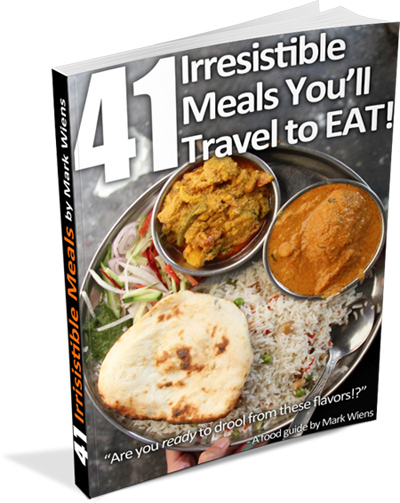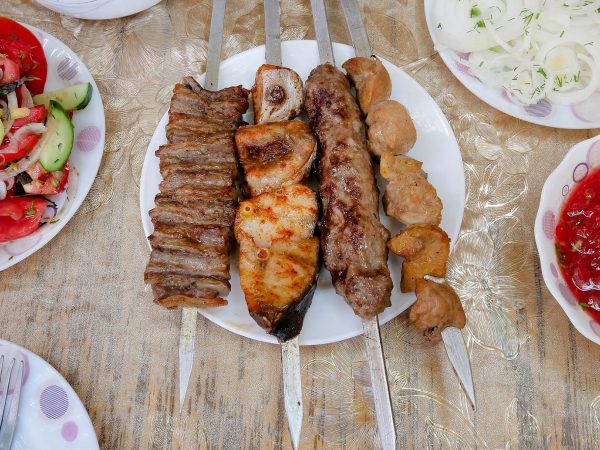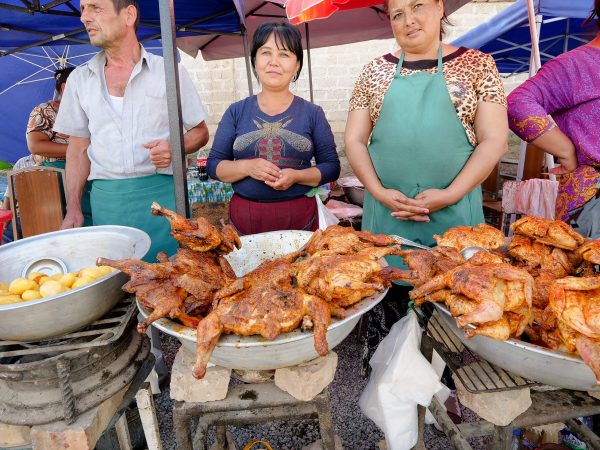

Have you ever eaten lamp shells?
They were new to me.
I can’t say I had ever seen them in a seafood market in Thailand or ever seen them on a menu either. So I was pretty happy to not only eat, but to find these creatures from their source.
While we were in Trat (ตราด), filming for the Thai food tv show, our mission was to go fishing for lamp shells, and then eat them.
Lamp shells are the more common name for sea mollusks that have a hard shell and a soft lower body.
To be more specific we were on the hunt for what’s known in Thai as hoy back bet (หอยปากเป็ด, which translates to duck beak shell fish), and what in English I believe is technically known as lingula anatina…
… but that’s getting a little scientific for me… so I guess all we really need to know is that they are some type of alien looking shell fish, and for the purposes of this article, I’m just going to call them lamp shells.

Where is Trat (ตราด)?
Trat is the province of Thailand located on the border of Cambodia, along the Gulf of Thailand. Many people go to Trat en-route to get to islands like Ko Chang and Ko Mak.
Since Trat is located on the coast, all things from the sea are widely consumed, including lamp shell fish, the main thing we were interested in finding from the source.

Going fishing
The ocean along Trat is quite shallow, and it’s also home to a substantial mangrove forest.

First we boarded onto boats with local fishermen, who drove us through the thickets of mangroves, and after riding for about 30 minutes or so, we arrived at the mouth of the gulf.

Just off the coast of Trat, the waters are quite shallow, and they do a lot of sea farm fishing, similar to the coast off Samut Songkhram, where they also make use of the shallow seas.
The normal way to fish for lamp shells is actually to jump into the waist high water, and just start feeling the shells with your toes and then diving in and scooping up a handful.
Get exclusive updates
Enter your email and I’ll send you the best travel food content.
But unfortunately, the water was teeming with jellyfish. My boat driver even jumped in the water for a few minutes to see if he could brave the jellyfish, but he ended up getting stung a few times, and so we had to revert to a different method of fishing.

Instead of getting into the jellyfish infested water, we took a pole with a rake on the bottom (I don’t have a photo of it as we got kind of wet, but it was like a fruit picker, only with shorter straight spikes more like a gravel rake).
One fisherman stood up in the boat, like he was surfing, and the other handled the motor. As the driver sped through the water, the fisherman took the rake, and scraped it on the floor of the ocean, scooping into the sticky mud and pulling lamp shell fish in by the rake full.

I was impressed, literally just seconds after the fisherman scraped his rake, he came up with a heaping amount of the lamp shells.
The bottom of the ocean was far from sand, it was more like clay, the mud was sticky and gray. Embedded into the thick mud were hundreds of lingula lamp shells.

I was able to take the rake a few times and try my luck fishing for the shells, and just like the fisherman, I surfaced with a nice rake full of lamp shells.
The toughest part about fishing with the rake, was staying balanced on the fast moving boat, while leveraging the rake into the bottom surface of the mud to scrape them up. But nevertheless, it was quite a fun experience.

After harvesting quite a good supply of lamp shells, we then headed back into the mangrove forest, in search of another delicacy, known as shipworms (but I’ll cover this in the next post).

Moo Baan Bred Nai (หมู่บ้านเปร็ดใน)
After having a successful lamp shell fishing trip in Trat, we then went to meet the leader of the village, who showed us how he is aiming to preserve the culture and ecosystem of the local mangrove forest.
With the help of the government, he has been able to set aside some of the forest as a place for people to come and learn about traditional sources of food and ingredients, as well as natural medicines and the traditional way of living in the area.

Pa Pu Yai (พ่อผู้ใหญ่)
Pa Pu Yai (พ่อผู้ใหญ่), the leader of Moo Baan Bred Nai (หมู่บ้านเปร็ดใน) village, gave us a tour of the mangrove forest, and explained all sorts of amazing trees and natural growing plants and what they were used for.

It was extremely interesting to learn about this mangrove forest in Trat, and how there are so many resources available within it.

I can’t remember the name of the tree, but there was one tree that Pa Pu Yai (พ่อผู้ใหญ่) explained that if you have an addiction alcohol, you could drink or eat something from the tree, and it would assist you in quitting your addiction.

Just like in Bang Krachao, Bangkok’s green lung park, there was about a 7 story high lookout platform at Moo Baan Bred Nai (หมู่บ้านเปร็ดใน).
I decided to make the climb, and the views of the forest and the small mountains in the background were beautiful.

Purple marsh crabs
Along with being home to numerous important trees and plants, the mangrove forest is a prime habitat for small sesarma crabs, better known as purple marsh crabs (in Thai ปูแสม).
These types of purple crabs can be cooked and eaten almost like crawfish, but in Thailand they are prized for their use in som tam, Thai green papaya salad.

As we were walking through the village, we met up with a crab fisherman, who was weighing his catch for the day.

I think he had something like 20 kilos of feisty purple marsh crabs, which he would proceed to sell at the larger market in Trat town.

Just like in Khon Kaen, where we were graciously served a home-cooked local feast, Trat was no different.
We went back to the home of Pa Pu Yai (พ่อผู้ใหญ่) where his wife and a few other aunties from the area, cooked up an incredible Trat seafood feast. Everything was locally sourced, from the seafood to the fresh ingredients.
I’ll cover a few of the other interesting dishes, like the soft shell crab, and the shipworm curry, in future posts, but in this article, I just wanted to highlight the interesting lamp shells.

How to eat lamp shells?
The lingula lamp shells were curried in a sweet coconut milk curry, with lots of garlic and black pepper. To me they looked a little like aliens shells, or like armored tanks.
The shell, just like any other shell fish was hard, and there was edible meat both within the shell, and also the long tail.
The long tail of the lamp shell had a texture similar to octopus or squid, but tougher and a little more rubbery. The inside of the shell was much softer, more creamy and rich, almost like crab eggs.
They were fun to eat, almost like leisurely eating peanuts in shells, and deshelling them one by one while snacking.

Conclusion
When I was in Trat, the province of Thailand bordering Cambodia on the Gulf of Thailand, I learned about a type of mollusk called a lingula anatina, which is a type lamp shell.
After sourcing them in the shallow muddy seas, and fishing for them ourselves, we went to the home of the leader of Moo Baan Bred Nai (หมู่บ้านเปร็ดใน) village, where his wife and a few other local aunties, prepared an outstanding local seafood feast.
The lamp shells were curried in sweet coconut milk and garlic. The tail was chewy, almost like tough squid, which the portion of the lingula within the shell, was rich and buttery.
Fishing and eating lingula lamp shells in Thailand, was a great experience, and the locally prepared seafood feast was outstanding.
Read more of my Thai food tv show adventures here.
Get exclusive updates
Enter your email and I'll send you the best travel food content.



